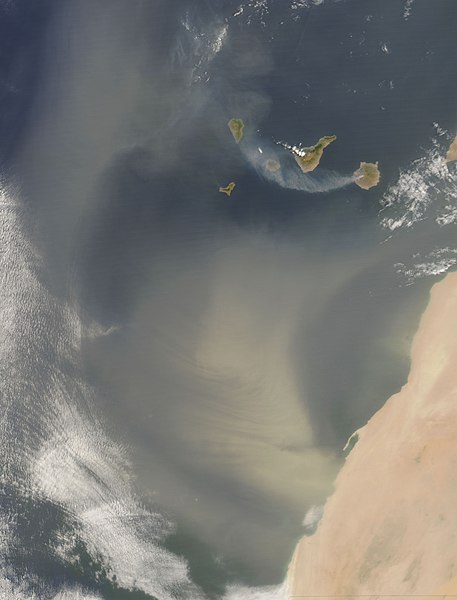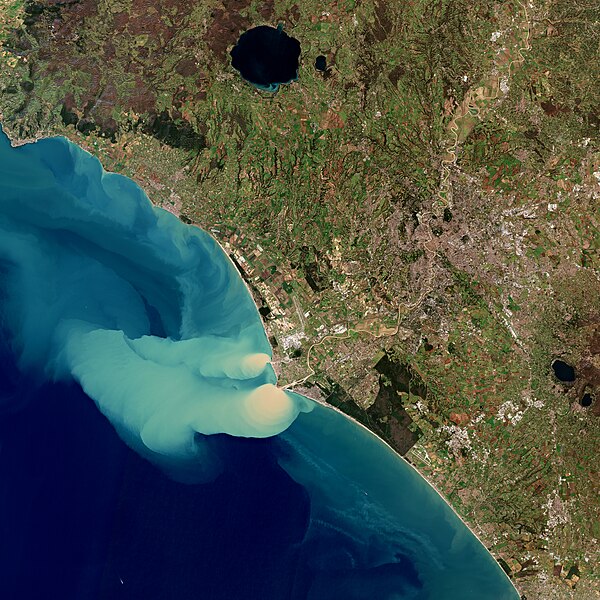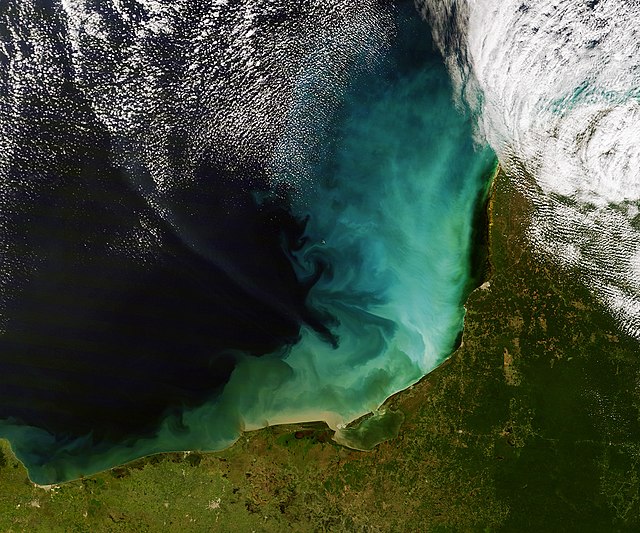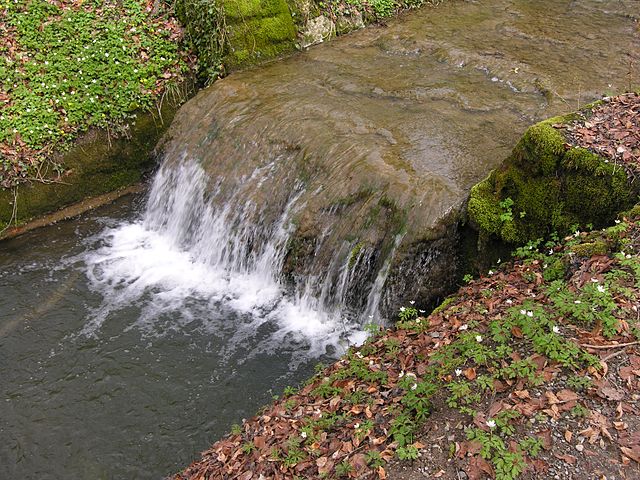Sediment transport is the movement of solid particles (sediment), typically due to a combination of gravity acting on the sediment, and the movement of the fluid in which the sediment is entrained. Sediment transport occurs in natural systems where the particles are clastic rocks, mud, or clay; the fluid is air, water, or ice; and the force of gravity acts to move the particles along the sloping surface on which they are resting. Sediment transport due to fluid motion occurs in rivers, oceans, lakes, seas, and other bodies of water due to currents and tides. Transport is also caused by glaciers as they flow, and on terrestrial surfaces under the influence of wind. Sediment transport due only to gravity can occur on sloping surfaces in general, including hillslopes, scarps, cliffs, and the continental shelf—continental slope boundary.
Dust blowing from the Sahara Desert over the Atlantic Ocean towards the Canary Islands
Sand blowing off a crest in the Kelso Dunes of the Mojave Desert, California
Deep, eroding glaciofluvial deposits alongside the Matanuska River, Alaska
Sand ripples, Laysan Beach, Hawaii. Coastal sediment transport results in these evenly spaced ripples along the shore. Monk seal for scale.
Sediment is a naturally occurring material that is broken down by processes of weathering and erosion, and is subsequently transported by the action of wind, water, or ice or by the force of gravity acting on the particles. For example, sand and silt can be carried in suspension in river water and on reaching the sea bed deposited by sedimentation; if buried, they may eventually become sandstone and siltstone through lithification.
River discharging sediment into the ocean
Sediment in the Gulf of Mexico
Sediment off the Yucatán Peninsula
Sediment builds up on human-made breakwaters because they reduce the speed of water flow, so the stream cannot carry as much sediment load.








